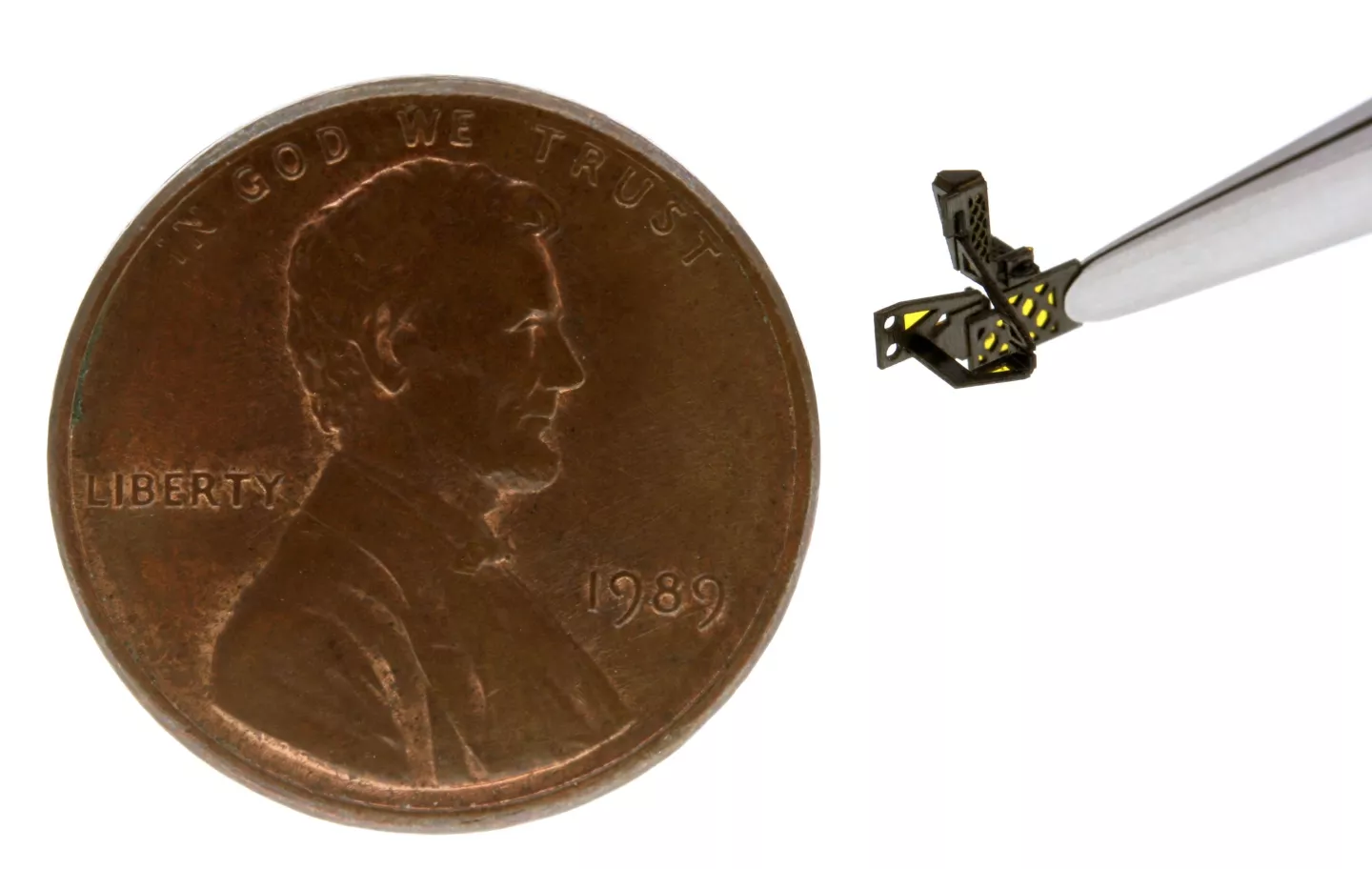Micro Air Vehicles (MAVs) are in development at various research institutes and aerospace firms worldwide, with an eye toward someday being used in applications such as search and rescue operations, environmental monitoring, or exploration of hazardous environments... or spying, as seems to be the case with all things micro. Like insects, many of these MAVs fly by flapping a set of wings, so they need to be designed to cope with crosswinds or potential wing damage. Engineers at Harvard University have created a tiny automobile-style differential, to keep the two wings generating the same amount of torque. The device is literally one one-millionth the size of what you’d find in your car.
“The drivetrain for an aerial microrobot shares many characteristics with a two-wheel-drive automobile,” said Pratheev S. Sreetharan, a graduate student in Harvard's School of Engineering and Applied Sciences. “Both deliver power from a single source to a pair of wheels or wings. But our PARITy differential generates torques up to 10 million times smaller than in a car, is 5 millimeters long, and weighs about one-hundredth of a gram.” PARITy is an acronym for Passive Aeromechanical Regulation of Imbalanced Torques.

In a test of the system, the Harvard team removed part of one wing of a PARITy-equipped MAV. The differential was able to maintain balanced flight, as the smaller wing simply beat faster to match the torque of the intact wing.
Designers of MAVs try to keep their programming as simple as possible to minimize the weight of the onboard processing hardware. The differential is ideal in that way, because it is purely mechanical. “Our design uses 'mechanical intelligence' to determine the correct wing speed and amplitude to balance the other forces affecting the robot,” said Harvard engineering professor Robert J. Wood. “It can slow down or speed up automatically to correct imbalances.”







